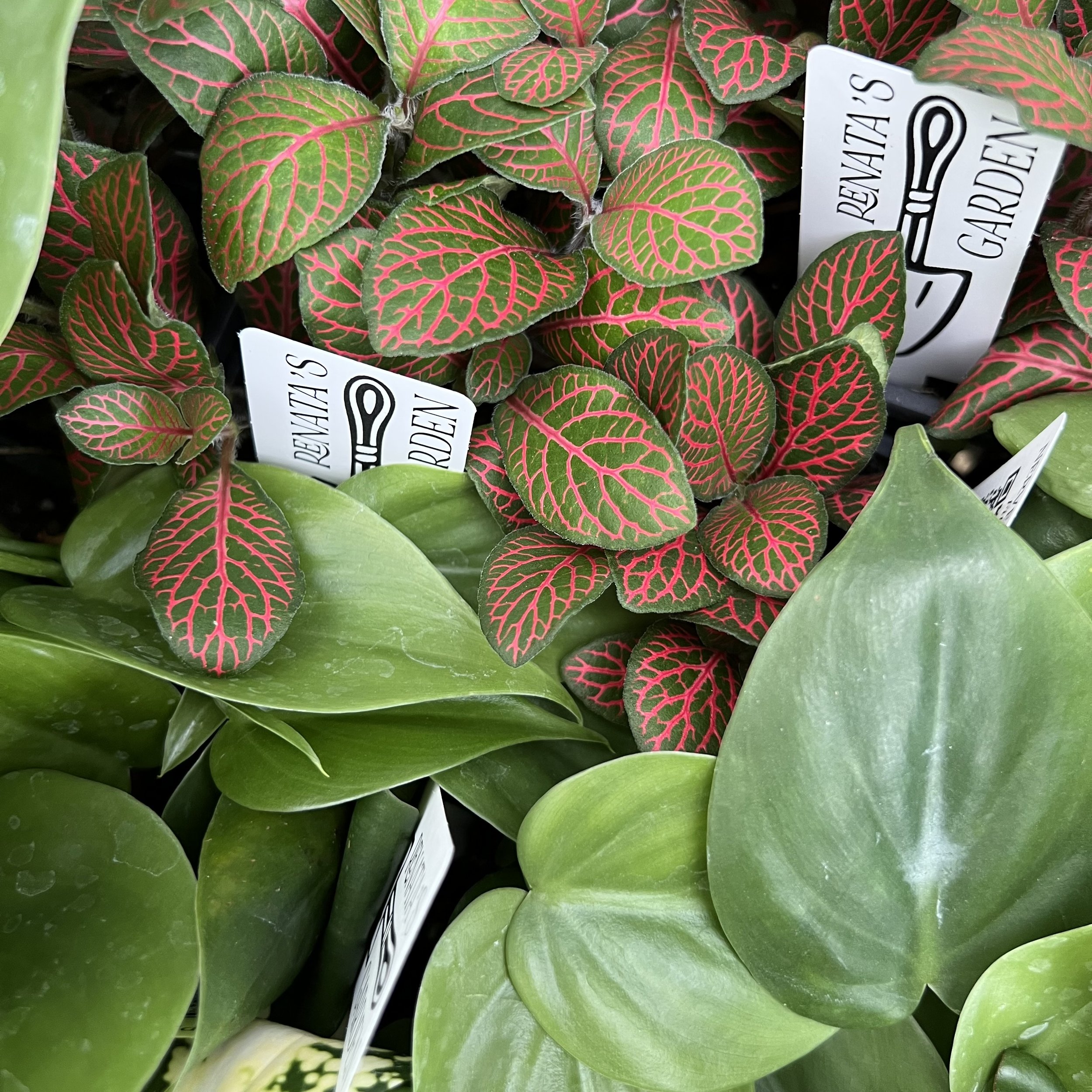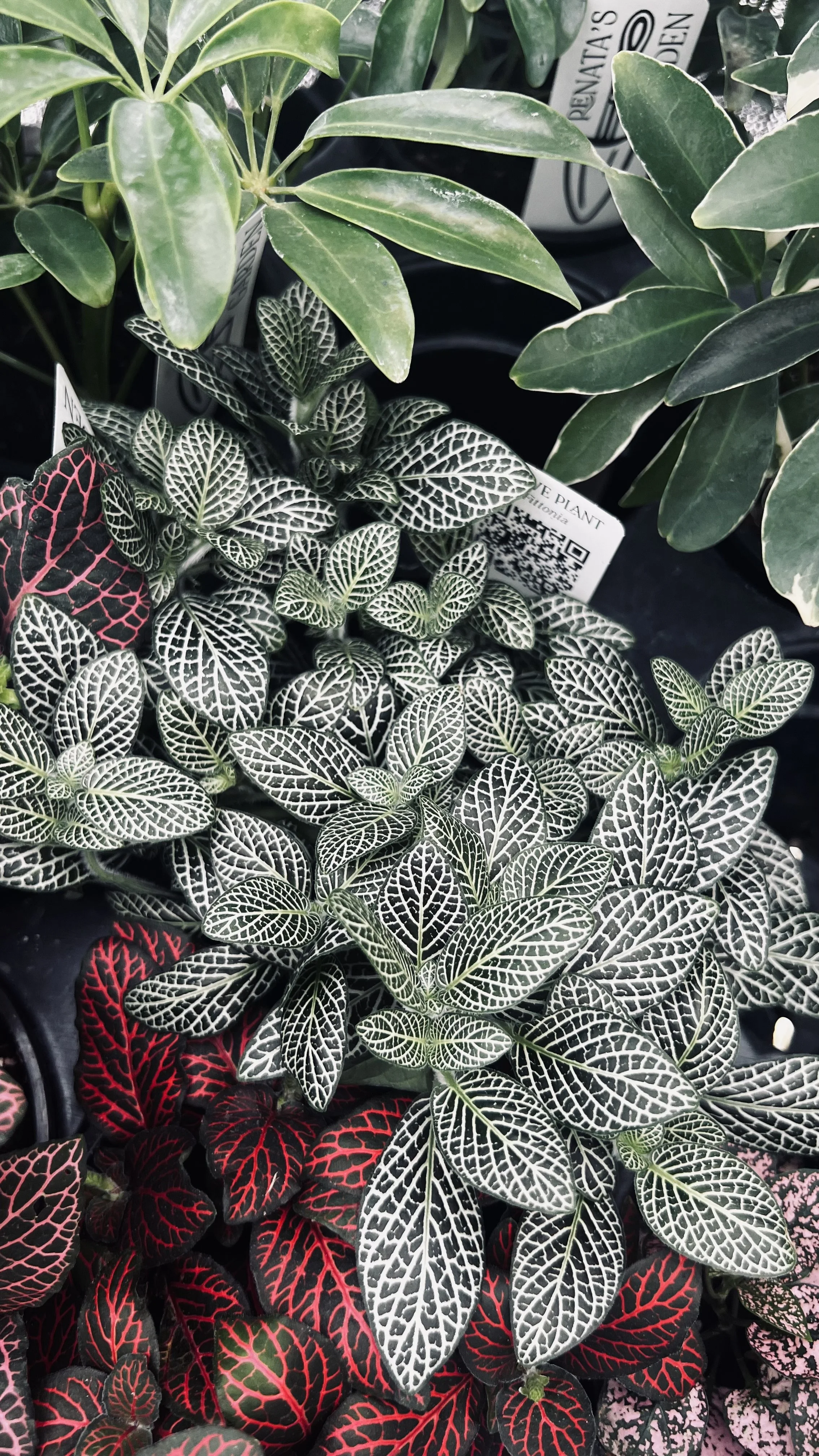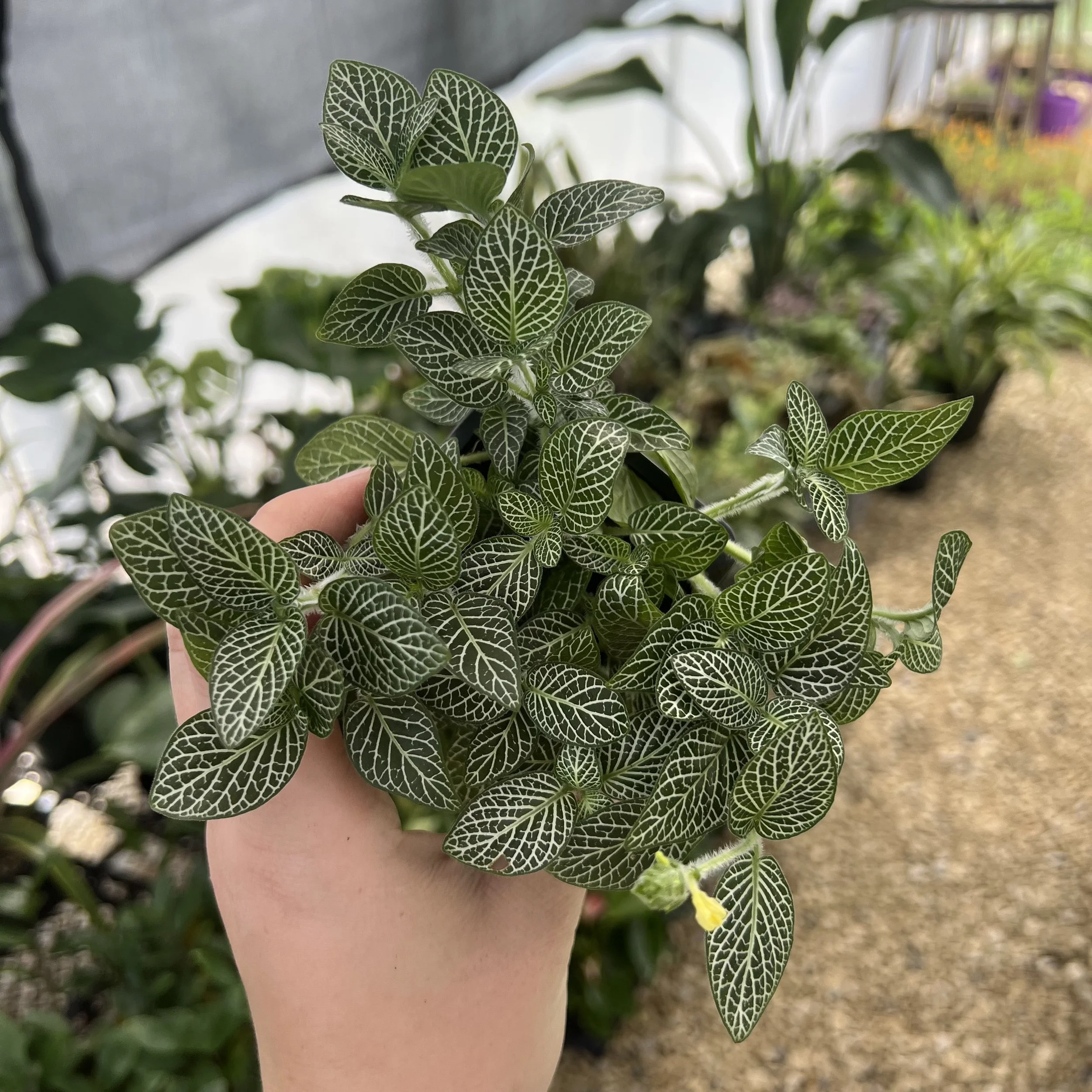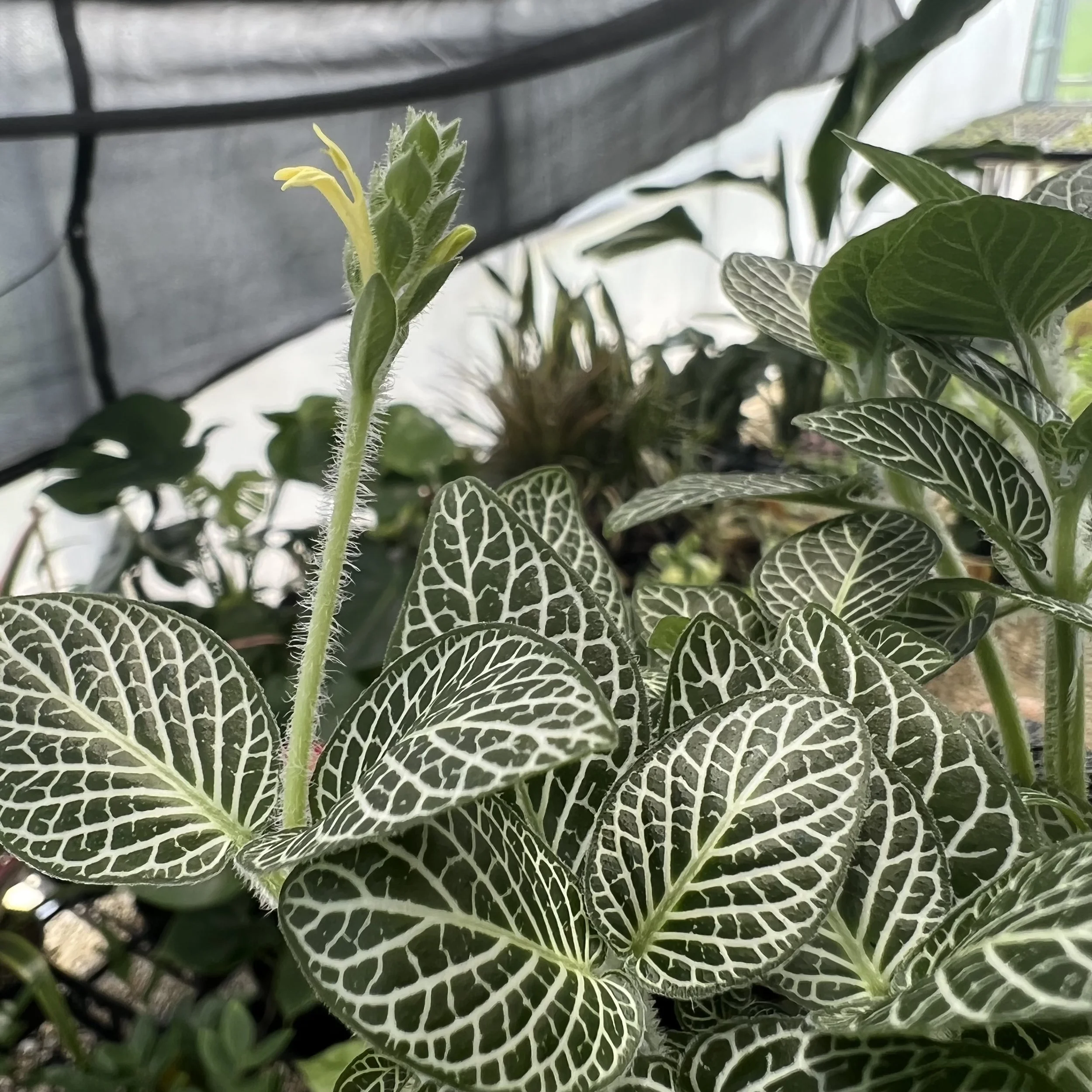
NERVE PLANT
Fittonia
Family Acanthaceae
-
Light: Bright, indirect light is best to support healthy growth. The unique foliage color will remain vibrant under better light levels.
Temperature: 60-80 F
Humidity: medium; avoid drafty areas
-
Water: Water when the top 2” of potting mix is dry. Because nerve plants have extremely fine root systems, they are quite susceptible to decay from overwatering. Avoid soggy roots!
Like other plants in its family, nerve plant will wilt dramatically when it is dry and ready for more moisture.
Repotting: Repot every 1-2 years into a slightly larger container (1-2” increased diameter). Use a general purpose potting mix. Nerve plants do best in shallow containers.
Fertilizing: Either…
Water Application: Incorporate fertilizer into your watering cycle once per month March through September. Dilute an all purpose fertilizer (20-20-20) by half OR use your favorite fertilizer rated for houseplant use in your water.
Slow Release: Incorporate slow release fertilizer pellets into the top inch of potting soil every 6 months. Apply the rate indicated for indoor plants on the label. If no recommendation for houseplants is present, apply 1/4 to 1/2 the listed rate.
-
The Acanthaceae family includes zebra plant (Aphelandra) & polka dot plant (Hypoestes).
-
(Listed in order of commonality…)
Root decay caused by overwatering
Fungus gnats
Stretch and/or color fading from low light levels
-
Is nerve plant pet safe?
Yes
What do I do if my nerve plant gets soft and leggy?
First, give your plant a little haircut. Pruning helps to encourage horizontal branching. Next, add more light if at all possible! Higher light levels keep plants on the shorter side.
Have a more specific question?
I’m just a few clicks away.




